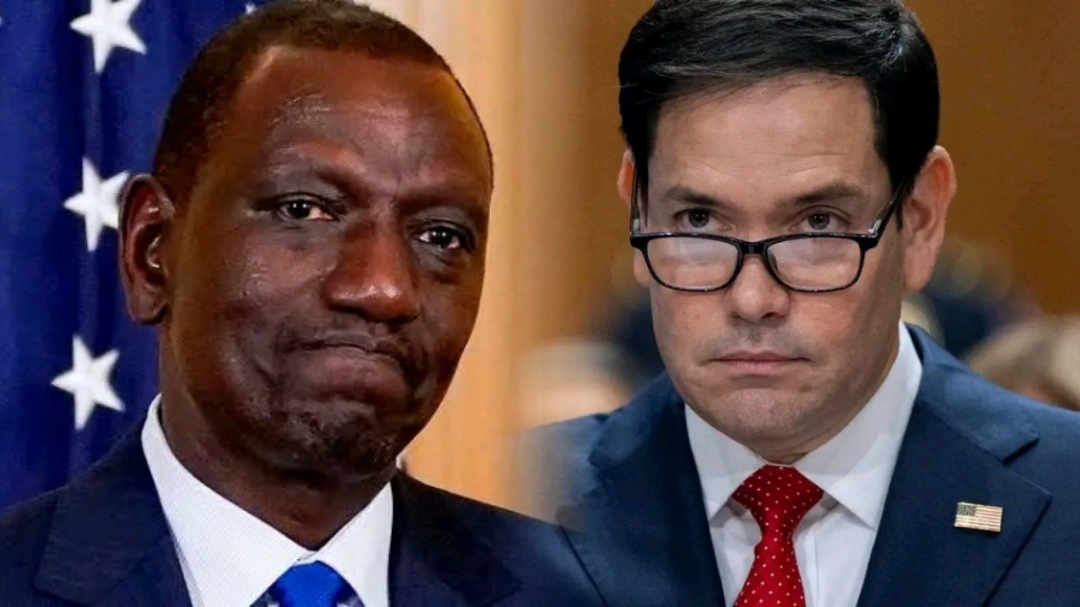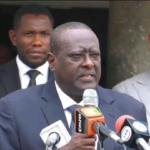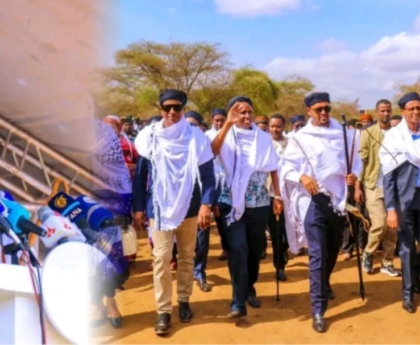In a pivotal diplomatic exchange underscoring the enduring alliance between Kenya and the United States, President William Ruto held a comprehensive telephone conversation with US Secretary of State and National Security Advisor Marco Rubio on August 19, 2025.
The discussion, which spanned bilateral, regional, and global issues, highlighted a shared vision for peace, security, and economic prosperity.
This marks the fourth such high-level engagement since the inauguration of the Trump administration in January 2025, signaling a robust commitment to collaborative problem-solving in an increasingly volatile world.
The dialogue comes at a critical juncture, as Kenya positions itself as a key player in international security efforts while navigating economic challenges, including the impending expiration of the African Growth and Opportunity Act (AGOA) in September 2025.
With President Ruto’s anticipated visit to the US on the horizon, the call sets the stage for enhanced cooperation that could reshape trade dynamics and bolster joint initiatives in hotspots like Haiti and the Democratic Republic of Congo (DRC).
Bolstering the Multinational Security Support Mission in Haiti
A cornerstone of the conversation was the urgent need to stabilize Haiti, where gang violence and political instability have plunged the nation into chaos since the 2021 assassination of President Jovenel Moïse.
President Ruto and Secretary Rubio concurred on the imperative for a United Nations Security Council (UNSC) resolution to establish a dedicated UN support office for the Kenya-led Multinational Security Support (MSS) mission.
This proposed office would provide essential logistical, operational, and administrative backing to enhance the mission’s effectiveness in restoring order and enabling humanitarian aid delivery.
Launched in June 2024 under UNSC Resolution 2699—adopted in October 2023 and renewed unanimously in September 2024—the MSS mission represents a multinational effort to support the Haitian National Police against armed gangs controlling vast swaths of Port-au-Prince and beyond.
Kenya, as the lead nation, has deployed over 400 police officers, with contributions from countries like Jamaica, Benin, and the Bahamas.
The mission has already yielded tangible results, including the reclamation of key infrastructure and a reduction in gang-related violence in targeted areas.
However, challenges persist. Funding shortages, logistical hurdles, and calls for a transition to a full UN peacekeeping operation have prompted discussions on evolving the framework.
In June 2025, a draft resolution to convert the MSS into a UN-led force was abandoned due to geopolitical disagreements, making the proposed support office a pragmatic next step.
“We concurred on the imperative and support for a resolution at the UN Security Council that establishes a UN support office for the Multinational Security Support (MSS) mission in Haiti, to aid efforts to stabilise and secure Haiti,” President Ruto stated in his official readout.
This alignment reflects Kenya’s growing role as a global security partner, with the US providing over $300 million in funding for the mission thus far.
Experts argue that a UN support office could streamline coordination, attract additional donors, and pave the way for long-term governance reforms in Haiti, ultimately reducing the humanitarian crisis that has displaced over 500,000 people.
Reaffirming Commitment to Peace in Eastern DRC
Shifting focus to Africa, the leaders delved into the protracted conflict in Eastern DRC, where armed groups, resource exploitation, and cross-border tensions have fueled one of the world’s deadliest humanitarian crises.
President Ruto and Secretary Rubio reaffirmed their shared commitment to regional peace through the East African Community (EAC) and Southern African Development Community (SADC) joint intervention.
The EAC-SADC framework, formalized at a summit in Dar-es-Salaam on February 8, 2025, aims to merge diplomatic processes like the Nairobi and Luanda initiatives.
This includes appointing facilitators, enforcing ceasefires, and advancing political dialogues to address root causes such as the activities of groups like M23 and ADF.
Recent meetings in March 2025, involving chiefs of defense and ministers, have emphasized de-escalation and humanitarian access amid escalating violence that has displaced millions and exacerbated food insecurity.
“We also discussed the EAC–SADC intervention in Eastern DRC, reaffirming our shared commitment to regional peace and sustainable security,” noted President Ruto. Kenya’s involvement, including hosting stakeholder talks, has been praised by the US, which has committed resources to support these efforts.
However, setbacks persist: SADC’s premature troop withdrawals in March 2025 highlighted capacity limitations, while diplomatic initiatives face hurdles from regional rivalries involving Rwanda and Uganda.
The crisis’s regionalization risks another multinational Congo War, underscoring the need for sustained international backing.
With over 7 million internally displaced and acute food insecurity affecting 25 million, the EAC-SADC intervention could be a game-changer if bolstered by US diplomatic and financial support.
Strengthening Kenya-US Bilateral Relations
At the heart of the call was a reaffirmation of the Kenya-US partnership, built on decades of collaboration in security, trade, and development. The leaders underscored the importance of deepening ties for mutual benefit, particularly as Kenya seeks to secure favorable trade terms post-AGOA.
“At the bilateral level, we underscored the importance of strengthening Kenya–U.S. relations and agreed to deepen cooperation for the long-term benefit of our people and nations,” President Ruto emphasized.
High-level trade talks are underway, focusing on a potential US-Kenya Free Trade Agreement (FTA) to replace AGOA, which has facilitated over $500 million in annual Kenyan exports to the US, primarily apparel and agricultural products.
Amid domestic volatility in Kenya—marked by youth-led protests and economic reforms—and shifts in US policy under President Trump, including a 10% tariff on certain imports, the partnership remains resilient.
Recent discussions have expanded beyond security to include investment in sustainable growth, climate resilience, and technology transfer.
President Ruto’s upcoming US visit offers a prime opportunity to finalize these agreements, potentially unlocking billions in investments and reinforcing Kenya’s status as a strategic hub in East Africa.
Looking Ahead: A Partnership for the Future
This telephone exchange not only addresses immediate crises but also lays the groundwork for enduring stability and prosperity.
As global challenges mount—from climate change to geopolitical tensions—Kenya and the US stand united, exemplifying how bilateral alliances can drive multilateral solutions.
With ongoing UNSC deliberations on Haiti and EAC-SADC progress in DRC, the world watches as these commitments translate into action, potentially transforming volatile regions into beacons of hope.
Share This Post





